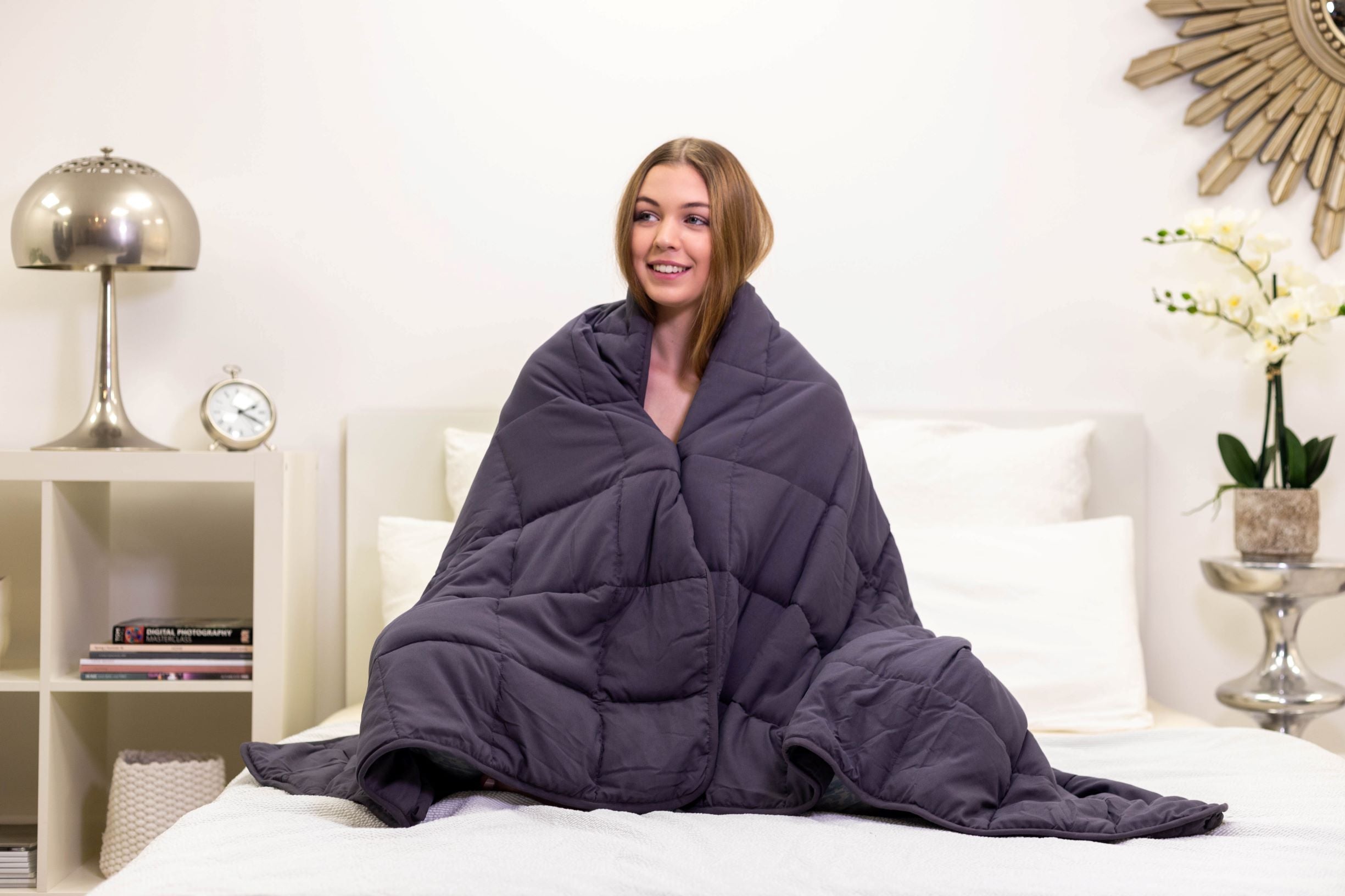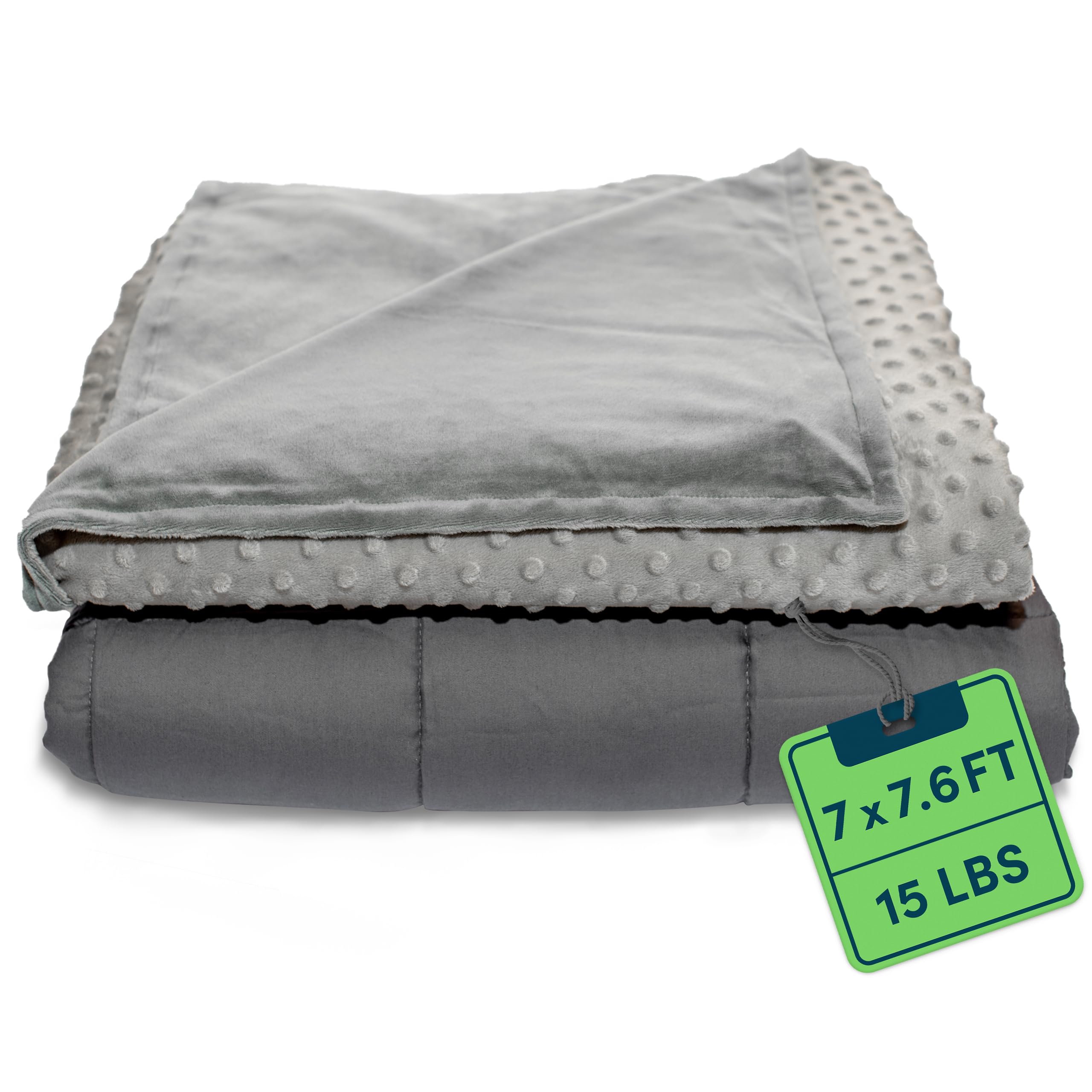Introduction
Choosing the right weight for a weighted blanket is crucial for ensuring its effectiveness and comfort. Weighted blankets are designed to provide therapeutic benefits by applying deep touch pressure (DTP) to the body, which can promote relaxation and reduce anxiety and stress. Here’s a detailed guide to help you determine how heavy your weighted blanket should be:
Factors to Consider:
- Body Weight:
- The general rule of thumb is to choose a weighted blanket that is about 10% of your body weight. This guideline helps ensure that the blanket provides enough pressure without being overly burdensome.
- For example, if you weigh 150 pounds, a weighted blanket of around 15 pounds would typically be appropriate.
- Personal Preference:
- Some individuals may prefer a slightly heavier or lighter blanket based on their comfort level and sensitivity to weight.
- It’s essential to consider how you feel when using the blanket. It should feel snug and comforting, not uncomfortably heavy.
- Age and Physical Condition:
- Weighted blankets are generally safe for adults and older children. However, for younger children or individuals with physical limitations, it’s crucial to consult with a healthcare professional before using a weighted blanket.
- Children typically should not use weighted blankets that exceed 10% of their body weight.
- Purpose of Use:
- Determine whether you intend to use the weighted blanket primarily for relaxation, better sleep, or sensory processing needs (e.g., for individuals with sensory processing disorders or autism spectrum disorder).
- Different purposes may influence the ideal weight of the blanket. For sleep enhancement, a slightly heavier blanket might be beneficial, whereas for relaxation during daytime activities, a lighter option may suffice.
- Blanket Size:
- The size of the blanket also affects its weight distribution. A larger blanket with the same weight as a smaller one may feel less heavy due to the weight being spread out over a larger area.
- Consider the dimensions of the blanket along with its weight to ensure optimal comfort and effectiveness.
Testing and Adjusting:
- Trial Period:
- If possible, try out different weighted blankets to determine which weight feels most comfortable and effective for you.
- Some manufacturers offer trial periods or return policies that allow you to exchange the blanket if the weight isn’t suitable.
- Gradual Adjustment:
- When first using a weighted blanket, give yourself time to adjust to the sensation of the weight. Start with a weight that feels manageable and gradually increase or decrease as needed.
- Consultation:
- If you have any concerns about choosing the right weight or if you have specific health conditions, consult with a healthcare provider or an occupational therapist who specializes in sensory integration therapy.
The 10% Rule
A commonly recommended guideline for choosing the weight of a weighted blanket is the “10% rule.” This suggests that your blanket should weigh approximately 10% of your body weight plus an additional pound or two. For example, if you weigh 150 pounds, your weighted blanket should ideally be around 15 to 17 pounds.
Personal Preference and Sensitivity
While the 10% rule serves as a useful starting point, personal preference plays a significant role. Some individuals may find that a slightly lighter or heavier blanket provides greater comfort. Factors such as personal sensitivity to touch or pressure, body frame, and overall health conditions can influence your comfort level with a weighted blanket.
Consider Health Conditions
If you have any health issues, it’s essential to consult with a healthcare professional before using a weighted blanket. People with respiratory problems, circulatory issues, or those who are pregnant may need to avoid weighted blankets or use lighter weights. Similarly, children, older adults, or individuals with mobility limitations might benefit from a lighter blanket to ensure safety and ease of movement.
Size and Coverage
The size of the weighted blanket also matters. Ideally, it should cover your body from the shoulders down to the feet, without hanging off the sides of the bed. A larger blanket might require more weight to maintain the desired pressure, but too much weight can be restrictive and uncomfortable. Ensure that the weight is evenly distributed throughout the blanket to avoid uneven pressure points.
Adjusting for Climate
Climate can affect your comfort level with a weighted blanket. In warmer climates, a lighter weight might be more suitable to prevent overheating. Conversely, in colder regions, a slightly heavier blanket could provide additional warmth without feeling overly burdensome.
Trial and Error
Given the personalized nature of comfort, it’s not uncommon to need some trial and error to find the perfect weight. Many manufacturers offer return policies or exchanges, allowing you to test different weights and find the one that best suits your needs. Don’t hesitate to experiment until you find the right balance of comfort and pressure.
Long-Term Use Considerations
Consider whether the blanket is intended for occasional use or nightly sleep. Over time, you may become accustomed to the weight, requiring adjustments or a switch to maintain the desired effect. Additionally, changes in your own body weight or health conditions may necessitate reevaluation of your blanket’s weight.
Conclusion:
Selecting the appropriate weight for your weighted blanket involves a balance between your body weight, personal comfort preferences, and the intended therapeutic benefits. By considering these factors and potentially testing different options, you can find a weighted blanket that enhances your relaxation, improves sleep quality, and supports overall well-being.





